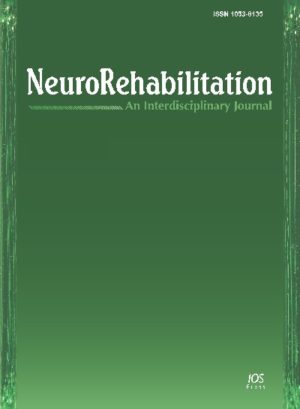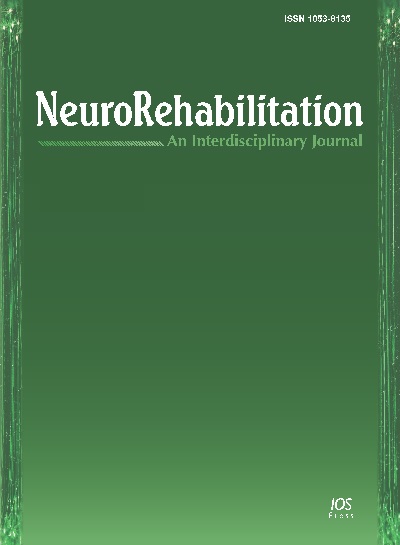Adaptive Environment Method Improves Outcomes for TBI & Stroke Post Acute Rehabilitation
FOR IMMEDIATE RELEASE
 Dallas, TX— Texas based Pate Rehabilitation announced the validation of its pioneering brain injury and stroke assessment tool in the peer reviewed journal Pate Environmentally Relevant Program Outcome System (PERPOS) was initially developed to improve return-to-work outcomes after brain injury rehabilitation.
Dallas, TX— Texas based Pate Rehabilitation announced the validation of its pioneering brain injury and stroke assessment tool in the peer reviewed journal Pate Environmentally Relevant Program Outcome System (PERPOS) was initially developed to improve return-to-work outcomes after brain injury rehabilitation.
For decades, rehabilitation interventions throughout the country demonstrated significant improvements in functioning within the clinical setting but were often unable to transfer those gains to the workplace, frequently resulting in an inability to maintain employment.
 Neuropsychologist Dr. Mary Ellen Hayden, founder of Pate Rehabilitation, created the PERPOS tool to improve skills transfer from rehabilitation to the real world. She identified two key environmental characteristics - structure and distraction - that impact an individual’s ability to return to normal life after an injury. Patients who responded well to high distraction/low structure environments were most successful.
Neuropsychologist Dr. Mary Ellen Hayden, founder of Pate Rehabilitation, created the PERPOS tool to improve skills transfer from rehabilitation to the real world. She identified two key environmental characteristics - structure and distraction - that impact an individual’s ability to return to normal life after an injury. Patients who responded well to high distraction/low structure environments were most successful.
PERPOS is an adaptive evaluation tool used to define the need for structure and the ability to handle distractions within a given environment. It accurately assesses an individual’s current tolerance levels and provides a guideline for improving these abilities in each phase of treatment.
Using the PERPOS neurorehabilitation therapists progressively alter the rehabilitation environment over time as function returns, slowly increasing distractions and independence levels. Therapists track patient functioning within various environments and customize therapies for greater gains. By modifying structure and distraction levels throughout treatment, the rehabilitation setting can better resemble complex, real world conditions.
Using environmental supports to facilitate learning or relearning of skills is an effective method of teaching in the field of education and the PERPOS helps patients bring these abilities from the clinic to the community.
 “To adequately rehabilitate someone after a brain injury or stroke, we must approximate the normal life that the patient hopes to return to,” Dr. Carlos Marquez de la Plata, one of the study’s authors, said. “The therapies and exercises we use to treat a patient are adjusted, as needed, to resemble the patient’s real environment (home and workplace) for optimal recovery. Ongoing environment modulation over time improves day-to-day functioning through a personalized, evidence based model.”
“To adequately rehabilitate someone after a brain injury or stroke, we must approximate the normal life that the patient hopes to return to,” Dr. Carlos Marquez de la Plata, one of the study’s authors, said. “The therapies and exercises we use to treat a patient are adjusted, as needed, to resemble the patient’s real environment (home and workplace) for optimal recovery. Ongoing environment modulation over time improves day-to-day functioning through a personalized, evidence based model.”
Twenty-five hundred patients with traumatic brain injuries and strokes participated in the PERPOS study published in NeuroRehabilitation. A majority of the patients (58%) fell within the moderate to severe range of functional limitation at admission to rehabilitation as measured by the MPAI-4, the accepted clinical standard for assessment. The study found a strong association between the MPAI-4 total score and the PERPOS total score suggesting the instrument has very good validity for use with brain injured individuals.
At discharge, the PERPOS and MPAI-4 remain highly correlated, further suggesting the PERPOS neurorehabilitation scale can be used to formulate discharge recommendations for altering home or work environments to optimize functioning. The study also found the PERPOS has strong inter-rater agreement indicating it can be used reliably to guide rehabilitation efforts of interdisciplinary treatment teams in a way that improves patient functioning and eventual meaningful outcomes for patients. (NeuroRehabilitation 40 (2017) 187–194)
Read more on the validated Pate neurorehabilitation tool.

